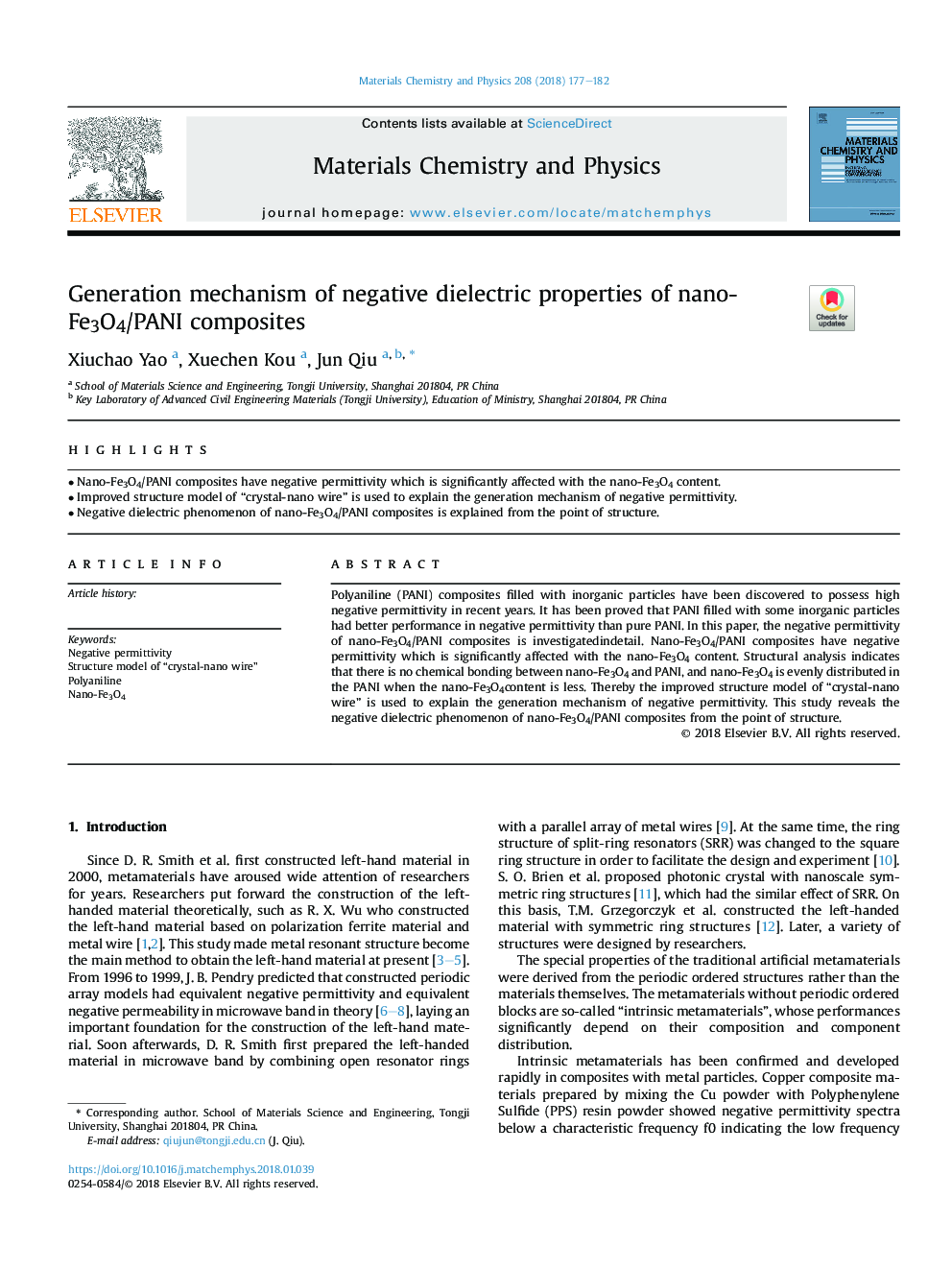| Article ID | Journal | Published Year | Pages | File Type |
|---|---|---|---|---|
| 7921980 | Materials Chemistry and Physics | 2018 | 6 Pages |
Abstract
Polyaniline (PANI) composites filled with inorganic particles have been discovered to possess high negative permittivity in recent years. It has been proved that PANI filled with some inorganic particles had better performance in negative permittivity than pure PANI. In this paper, the negative permittivity of nano-Fe3O4/PANI composites is investigatedindetail. Nano-Fe3O4/PANI composites have negative permittivity which is significantly affected with the nano-Fe3O4 content. Structural analysis indicates that there is no chemical bonding between nano-Fe3O4 and PANI, and nano-Fe3O4 is evenly distributed in the PANI when the nano-Fe3O4content is less. Thereby the improved structure model of “crystal-nano wire” is used to explain the generation mechanism of negative permittivity. This study reveals the negative dielectric phenomenon of nano-Fe3O4/PANI composites from the point of structure.
Related Topics
Physical Sciences and Engineering
Materials Science
Electronic, Optical and Magnetic Materials
Authors
Xiuchao Yao, Xuechen Kou, Jun Qiu,
